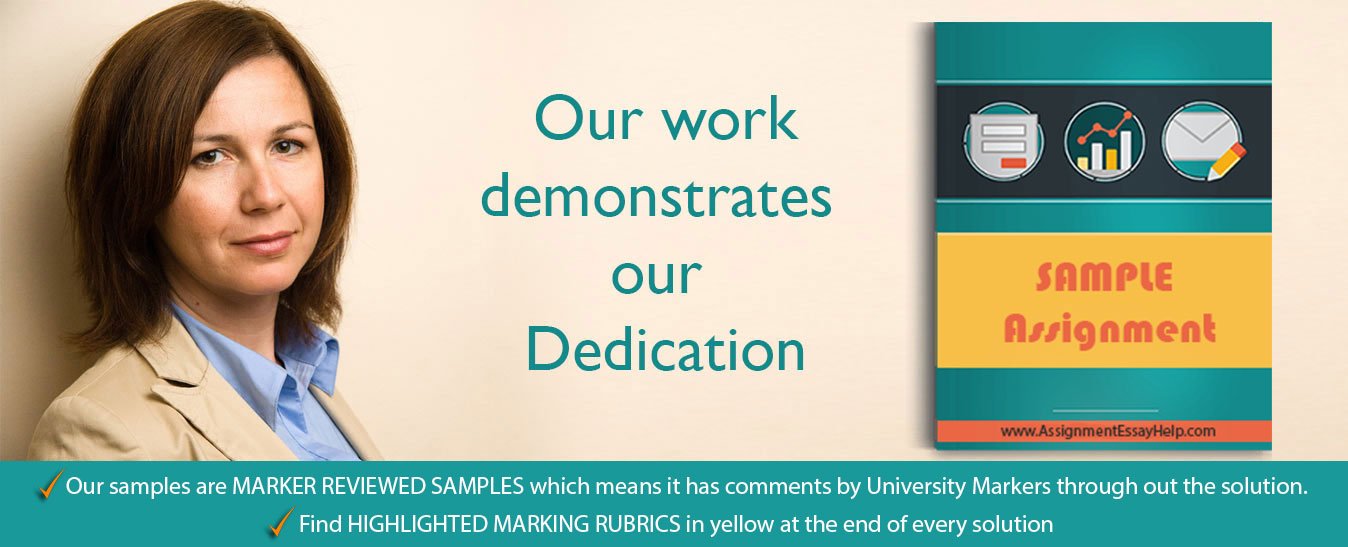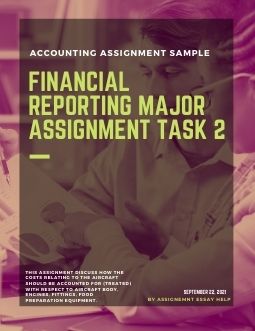
Accounting Assignment Help Samples
You can download the solution to the following question for free.
For further assistance in Accounting Assignment help, please check our offerings in Sociology assignment solutions. Our subject-matter-experts provide online assignment help to finance students from across the world and deliver plagiarism free solution with free Turnitin report with every solution.
(AssignmentEssayHelp do not recommend anyone to use this sample as their own work.)
Question
Question 1: (Approximately 400 words)
TDM Ltd is a manufacturing business at Mudjimba on the Sunshine Coast. You are the accountant for the company and the following items/issues relate to the financial year ending 30th June, 2016:
- Photographs of the company’s founders and original buildings, which are of great sentimental and historical value only.
- TDM Ltd is being sued for negligence by Zero Ltd and the legal advice is that it is likely the company will lose the case in court.
- TDM Ltd is being sued for negligence by Badger Ltd and the legal advice is that it is likely the company will win the case in court.
- Obsolete plant and equipment is now (as at 30 June 2016) retired from use by the company.
- TDM Ltd has received a donation of $20,000.
Required:
Explain how TDM Ltd should account for each of the above items. You must justify your answer by reference to the AASB Conceptual Framework’s definitions and recognition criteria for assets, liabilities, income and/or expenses as applicable. You must also state which General Ledger accounts are to be debited and credited.
Question 2: (Approximately 600 words)
On 1st July, 2016, SC Airlines Ltd acquired a new aeroplane for a total cost of $10 million dollars. The following breakdown of the costs to build the aeroplane was given by the manufacturers.
|
Aircraft body |
$3,000,000 |
|
Engines (2) |
$4,000,000 |
|
Fitting out of aircraft: |
|
|
Seats |
$1,000,000 |
|
Carpets |
$ 50,000 |
|
Electrical equipment: |
|
|
Passenger seats |
$ 200,000 |
|
Cockpit |
$1,500,000 |
|
Food preparation equipment |
$ 250,000 |
All costs include installation and labour costs associated with the relevant part.
It is expected that the aircraft will be kept for 10 years and then sold. The main value of the aircraft at that stage will be the body and the engines. The expected selling price is $2.1 million, with the body and engines retaining the existing proportionate value.
Costs in relation to the aircraft over the next 10 years are expected to be as follows:
- Aircraft body: This requires an inspection every 2 years for cracks and wear and tear, at a cost of $10,000.
- Engines: Each engine has an expected life of 4 years before being sold for scrap. It is expected that the engines will be replaced in 2020 for $4.5 million and again in 2024 for $6 million. These engines are expected to incur annual maintenance costs of $300,000. The manufacturer has informed SC Airlines that a new prototype engine with an extra 10% capacity should be on the market in 2022, and that existing engines could be upgraded at a cost of $1 million.
- Fittings: Seats are replaced every 3 years. Expected replacement costs are $1.2 million in 2019 and $1.5 million in 2025. The repair of torn seats and faulty mechanisms is expected to cost $100,000 per annum. Carpets are replaced every 5 years. They will be replaced in 2022 at an expected cost of $65,000, but will not be replaced again before the aircraft is sold in 2026. Cleaning costs amount to $10,000 per annum. The electrical equipment (such as the TV) for each seat has an annual repair cost of $15,000. It is expected that, with the improvements in technology, the equipment will be totally replaced in 2022 by substantially better equipment at a cost of $350,000. The electrical equipment in the cockpit is tested frequently at an expected annual cost of $250,000. Major upgrades to the equipment are expected every 2 years at expected costs of $250,000 (in 2015), $300,000 (in 2017), $345,000 (in 2019), and $410,000 (in 2024). The upgrades will take into effect the expected changes in technology.
- Food preparation equipment: This incurs annual costs for repair and maintenance of $20,000. The equipment is expected to be totally replaced in 2022.
Required:
- Start by establish the issues for your analysis by addressing the following:
- the advantages of a components approach versus a simple depreciation of the $10 million dollars over the 10-year period.
- Since AASB 116 requires initial recognition at cost and then provides a choice between either the cost model (impairment) or the revaluation model (increment and/or decrement) – discuss the advantages and/or disadvantages in applying either model to the aeroplane as a whole – indicating which would be the most appropriate as a result or if treated as components then which would be most applicable to the components you have identified.
- Basis for selecting the method of depreciation according to AASB 116.
- Discuss how the costs relating to the aircraft should be accounted for (treated) with respect to:
- Aircraft body;
- Engines;
- Fittings;
- Food preparation equipment.
- Where relevant consider/discuss issues such as:
- the treatment of the upgrades of cockpit equipment.
- accounting for inspections
- Determine the expenses to be recognised for the financial year 1st July 2016 to 30th June 2017.
-
- Aircraft body;
- Engines;
- Fittings;
- Food preparation equipment;
- Total Expenses.
Question 3: (Approximately 200 words)
In the discussion by Upton (2001, 71) regarding the lives of intangible assets it is noted that the formula for Coca-Cola has grown more valuable over time, not less, and that Sir David Tweedie, former chairman of the IASB, jokes that the brand name of his favourite Scotch whisky is older than the United States of America — and, in Sir David’s view, the formula for Scotch whisky has contributed more to the sum of human happiness.
Required:
Outline the accounting treatment for brands under AASB 138/IAS 38, and discuss the difficulties for standard setters in allowing the recognition of all brands and formulas on statements of financial position.
Question 4: (Approximately 300 words)
Provisions are recognised as a liability in the statement of financial position whereas contingent liabilities are not recognised in the financial statements but disclosed in the notes to financial statements. Paragraph 12 of AASB 137/IAS 37 Provisions, Contingent Liabilities and Contingent Assets states that ‘in a general sense, all provisions are contingent because they are uncertain in timing or amount’.
Required:
- Discuss possible reasons as to why provisions are recognised in the financial statements whilst contingent liabilities are not.
- Determine whether the following items would be classified and recoded as liabilities or not (provide a brief explanation for your decision):
- Provision for long-service-leave;
- Dividends payable;
- Preference shares.
Accounting Assignment Solution
Question 1.
Part 1.
The photographs of founders and original buildings are artistic in nature and are intangible assets (AASB, 2004). However, according to IAS 38 (2014), these photographs are internally generated and not from any business combinations. Hence, these are not recognised as intangible assets despite having historical and sentimental values. These photographs can be used in corporate reporting (AASB, 2015). This item will not be stated in General Ledger accounts due to a lack of monetary value associated with it.
Part 2.
In the given negligence suit against TDM by Zero Ltd, there is a higher probability of losing the case. This is a contingent liability for the company as TDM has to make payments, but the case is unclear (Picker, Wise, & Loftus, 2010). A contingent liability arises as a potential obligation that is payable as a result of a future event and not under the control of TDM (AASB, 2015). According to AASB 137, this is not recorded but disclosed in financial statements, i.e. in the balance sheet with endnotes to explain the nature of the liability.
(Some parts of the solution has been blurred due to privacy protection policy)

 WhatsApp Us
WhatsApp Us